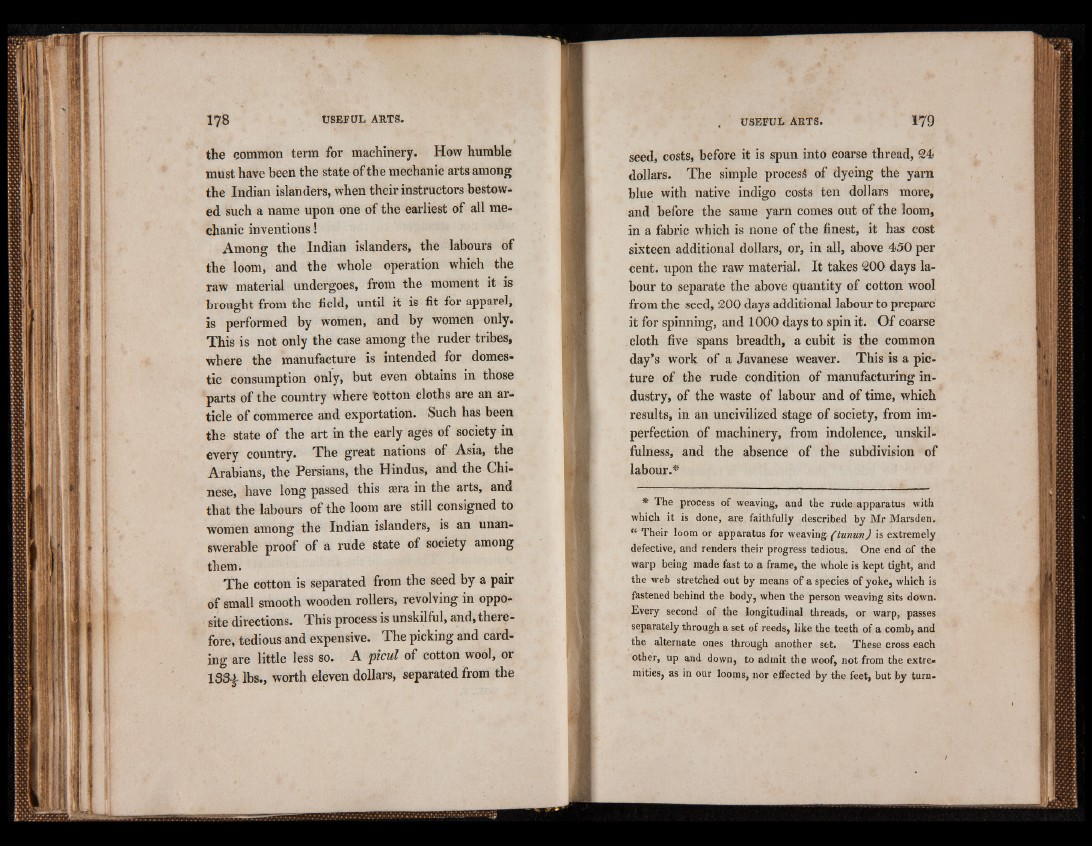
the common term for machinery. How humble
must have been the state of the mechanic arts among
the Indian islanders, when their instructors bestowed
such a name upon one of the earliest of all mechanic
inventions!
Among the Indian islanders, the labours of
the loom, and the whole operation which the
raw material undergoes, from the moment it is
brought from the field, until it is fit for apparel,
is performed by women, and by women only.
This is not only the case among the ruder tribes,
where the manufacture is intended for domestic
consumption only, but even obtains in those
parts of the country where Cotton cloths are an article
of commerce and exportation. Such has been
the state of the art in the early ages of society in
every country. The great nations of Asia, the
Arabians, the Persians, the Hindus, and the Chinese,
have long passed this sera in the arts, and
that the labours of the loom are still consigned to
women among the Indian islanders, is an unanswerable
proof of a rude state of society among
them.
The cotton is separated from the seed by a pair
of small smooth wooden rollers, revolving in opposite
directions. This process is unskilful, and, therefore,
tedious and expensive. The picking and carding
are little less so. A picul of cotton wool, or
133± lbs., worth eleven dollars, separated from the
seed, costs, before it is spun into coarse thread, 24
dollars. The simple process of dyeing the yarn
blue with native indigo costs ten dollars more,
and before the same yarn comes out of the loom,
in a fabric which is none of the finest, it has cost
sixteen additional dollars, or, in all, above 450 per
cent, upon the raw material. It takes 200 days labour
to separate the above quantity of cotton wool
from the seed, 200 days additional labour to prepare
it for spinning, and 1000 days to spin it. Of coarse
cloth five spans breadth, a cubit is the common
day’s work of a Javanese weaver. This is a picture
of the rude condition of manufacturing industry,
of the waste of labour and of time, which
results, in an uncivilized stage of society, from imperfection
of machinery, from indolence, unskilfulness,
and the absence of the subdivision of
labour.*
* The process of weaving, and the rude apparatus with
which it is done, are faithfully described by Mr Marsden.
“ Their loom or apparatus for weaving. ( tunun) is extremely
defective, and renders their progress tedious. One end of the
warp being made fast to a frame, the whole is kept tight, and
the web stretched out by means of a species of yoke, which is
fastened behind the body, when the person weaving sits down.
Every second of the longitudinal threads, or warp, passes
separately through a set of reeds, like the teeth of a comb, and
the alternate ones through another set. These cross each
other, up and down, to admit the woof, not from the extremities,
as in our looms, nor effected by the feet, but by turn